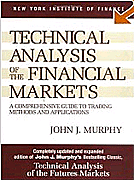IMF Gold Sales: a great opportunity to buy the dips!!
Gold Falls as U.S. Pledges Support for Some IMF Bullion Sales
By Pham-Duy Nguyen
Feb. 25 (Bloomberg) -- Gold fell the most in almost two weeks after the U.S. said it would back ``limited'' sales of bullion reserves by the International Monetary Fund, the third- largest holder of the precious metal.
Some of the IMF's $98 billion in reserves should be sold to cover a revenue shortfall, said David McCormick, the Treasury's undersecretary for international affairs. Gold has more than tripled in the past seven years, gaining 12 percent this year and touching an all-time high of $958.40 an ounce on Feb. 21.
``Anytime there's more supply coming into the market, the price goes lower,'' said Ron Goodis, the futures trading director at Equidex Brokerage Group Inc. ``There's a fear that the large speculators who've been pushing this market higher might step back and wait to buy.''
Gold futures for April delivery fell $7.60, or 0.8 percent, to $940.20 an ounce at 11:37 a.m. on the Comex division of the New York Mercantile Exchange. A close at that price would be the biggest drop for a most-active contract since Feb. 12.
The IMF holds approximately 3,217.3 metric tons of gold, following the central banks of the U.S. and Germany, according to data from the producer-funded World Gold Council. The U.S. has 8,133.5 tons and Germany holds 3,417.4 tons.
Official sales by central banks rose 33 percent in 2007 to 488 metric tons, according to estimates by London-based research firm GFMS Ltd.
Limiting Sales
Under the Central Bank Gold Agreement, countries that adopted the euro, along with Switzerland and Sweden, agreed to limit sales to 2,500 metric tons from Sept. 27, 2004, to Sept. 6, 2009, or 500 tons a year.
Any sale from the IMF would be similar to the central bank accord, said George Milling-Stanley, the World Gold Council's manager of investment and market analysis.
Second and third-tier central banks, including China's and India's, may buy the IMF's gold, limiting the pressure on prices by keeping the bullion out of the hands of investors, said Dennis Gartman, economist and editor of the Suffolk, Virginia- based Gartman Letter.
``If you're China, you're holding all those U.S. dollars in reserves, it wouldn't be a bad idea to swap some of that for gold,'' Gartman said.
China is the 10th-largest holder of gold amongst central banks, with just 1 percent, or 600 metric tons of gold, in its reserves, according to World Gold Council data.
World gold-mine production fell 1.4 percent last year to 2,444 metric tons, an 11-year low, according to GFMS.
*****
And this from the perennial Jim Sinclair:
"...
Dear CIGAs,
The following is the history of the IMF and their gold shares.
It is important to note that their sales all have taken place at times when major bull markets were either just beginning or, as in 1976-1980, at the start of the major parabolic move to then all time highs.
Now you know why I said our friends from 2002 Chung Phat and Dr, No are high-fiving at the news that the biggest dopes in gold are about to prove their status beyond any doubt once again.
How and when the IMF used gold:
"Outflows of gold from the IMF's holdings occurred under the original Articles of Agreement through sales of gold for currency, and via payments of remuneration and interest. Since the Second Amendment of the Articles of Agreement, outflows of gold can only occur through outright sales. Key gold transactions included:
* Sales for replenishment (1957–70). The IMF sold gold on several occasions during this period to replenish its holdings of currencies.
* South African gold (1970–71). The IMF sold gold to members in amounts roughly corresponding to those purchased in these years from South Africa.
* Investment in U.S. government securities (1956–72). In order to generate income to offset operational deficits, some IMF gold was sold to the United States and the proceeds invested in U.S. government securities. Subsequently, a significant buildup of IMF reserves prompted the IMF to reacquire this gold from the U.S. government.
* Auctions and " restitution" sales (1976–80). The IMF sold approximately one third (50 million ounces) of its then-existing gold holdings following an agreement by its members to reduce the role of gold in the international monetary system. Half of this amount was sold in restitution to members at the then-official price of SDR 35 per ounce; the other half was auctioned to the market to finance the Trust Fund, which supported concessional lending by the IMF to low-income countries.
* Off-market transactions in gold (1999–2000). In December 1999, the Executive Board authorized off-market transactions in gold of up to 14 million ounces to help finance IMF participation in the Heavily Indebted Poor Countries (HIPC) Initiative. Between December 1999 and April 2000, separate but closely linked transactions involving a total of 12.9 million ounces of gold were carried out between the IMF and two members (Brazil and Mexico) that had financial obligations falling due to the IMF. In the first step, the IMF sold gold to the member at the prevailing market price and the profits were placed in a special account invested for the benefit of the HIPC Initiative. In the second step, the IMF immediately accepted back, at the same market price, the same amount of gold from the member in settlement of that member's financial obligations. The net effect of these transactions was to leave the balance of the IMF's holdings of physical gold unchanged..."
Should they sell in April of 2008 then gold is going to the next Angel above $1650.
That is the only implication IMF sales have to the price of gold. It has been the most powerfully bullish event every time they have done it, and will be again.
If any newcomer to gold sees the IMF news as a reason to sell gold these newcomers are as DOPEY as the IMF has proved to be every time, time and time again.
Respectfully,
Jim
..."
Labels: gold, IMF, J.Sinclair, market manipulation















![[Most Recent Quotes from www.kitco.com] [Most Recent Quotes from www.kitco.com]](http://www.kitco.com/images/live/t24_au_en_usoz_6.gif)
![[Most Recent Quotes from www.kitco.com] [Most Recent Quotes from www.kitco.com]](http://www.kitco.com/images/live/au_go_0030_ny.gif)
![[Most Recent Quotes from www.kitco.com] [Most Recent Quotes from www.kitco.com]](http://www.kitco.com/images/live/au_go_0365_ny.gif)
![[Most Recent Quotes from www.kitco.com] [Most Recent Quotes from www.kitco.com]](http://kitconet.com/charts/metals/silver/t24_ag_en_usoz_4.gif)

















0 ΣΧΟΛΙΑ (COMMENTS):
Post a Comment
<< Home